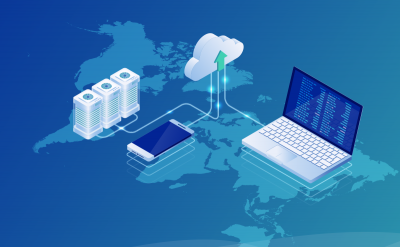Colocation providers are expecting a rapid surge in the consumption with enterprises turning towards an affordable solution in the cloud for 2019. Enterprises might be rethinking the infrastructure and application strategy to be applied before and how the current data centers will be affected by technological development. Replacing the current on-premise data centers with cloud services is the growing standard that’s being adopted. Many enterprises are moving towards modern colocation facilities to reduce the scalability cost.
Client Heiden, a Chief Revenue Officer at QTS explained that enterprises in healthcare, financial, technology, and other sectors had adopted the data center architecture to store large amounts of data. The current on-premise environment to be replaced by the modern cloud facilities will require millions of dollars of investment. Enterprises are also beginning to shift towards the colocation because it reduces the cost of maintenance, space, and power.
Colocation providers are also starting to shift towards the application based architecture to help the enterprises. The application-based architecture moves closer to the end-user that can improve the performance and reduce the bandwidth requirements.
The demand for the data centers that can support different applications and can handle the increased demand from the end-user is dominating. IoT and machine learning will become practical to be combined with the real-time application. The real-time applications will require both the edge computing and hyper-scale infrastructure to support.
HERE ARE SOME OF THE DATA CENTER TRENDS THAT ENTERPRISES MIGHT SEE IN 2019
1. Colocation will just be as good as cloud
Infrastructure or colocation specifically will be managed by software-driven visibility and control. Using the colocation architecture API architecture will be built or shifted towards the micro-service architecture. Enterprises will be able to get seamless access and control over the complete IT infrastructure with the software-driven model. The demand in 2019, will be focused on the development of a wide range of virtualization of different aspects in the network.
2. Hybrid Cloud Adoption
The year 2019 will lead many enterprises to think about their cloud strategy. Enterprises will realize that the colocation can be beneficial but not for all cases of data. The increase in hybrid cloud strategy will help in segregating the data workload into two different aspects of public cloud viable and private cloud. The year will also see a race between the cloud providers that can specialize in flexible hybrid solutions that would support both public and private cloud. The mix between public and private cloud will ensure the workplace performance and operational efficiency.
3. Demand for Colocation space
Colocation helps the enterprises to optimize and define the multi-cloud applications by placing different points close to the users and cloud. Colocation provides the required flexibility to work with the different size of networks and also inducting the expansion plans to accommodate different workloads.
Enterprises are opting to adopt the software-defined data centers instead of on-premise data centers. With the new software-defined data centers, the enterprises can control the access and scalability.
4. Edge will be taking the center stage
Enterprises that are highly dependent on the real-time data or enterprises that want to improve their business operations will be adopting the edge combined with the cloud network. Using the edge will help the enterprises to react to on-time situations to satisfy the business needs. Hyper-scale combined with edge data centers can support different applications such as AI, Internet of Things (IoT) and many upcoming technologies.
Data Center Solutions that will lead to better flexibility and scalable technology will be dominant in 2019. Enterprises will look for end-user technology that will increase the information exchange without compromising on the security. As more and more enterprises adopt cloud the challenge for the cloud providers will be to maintain the bandwidth of the network and offering security solutions for different requirements.
To know more about the data center solutions, you can download recent whitepapers.






































































